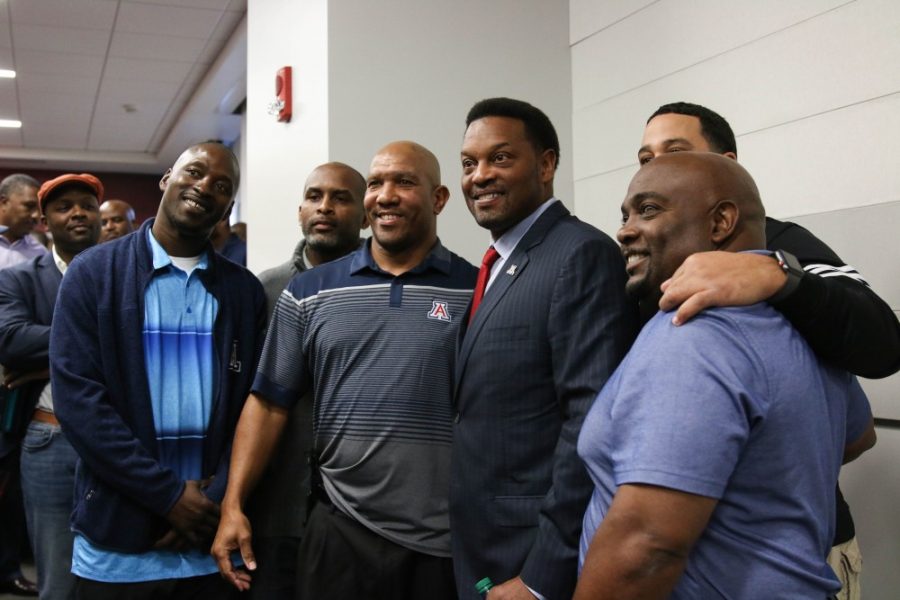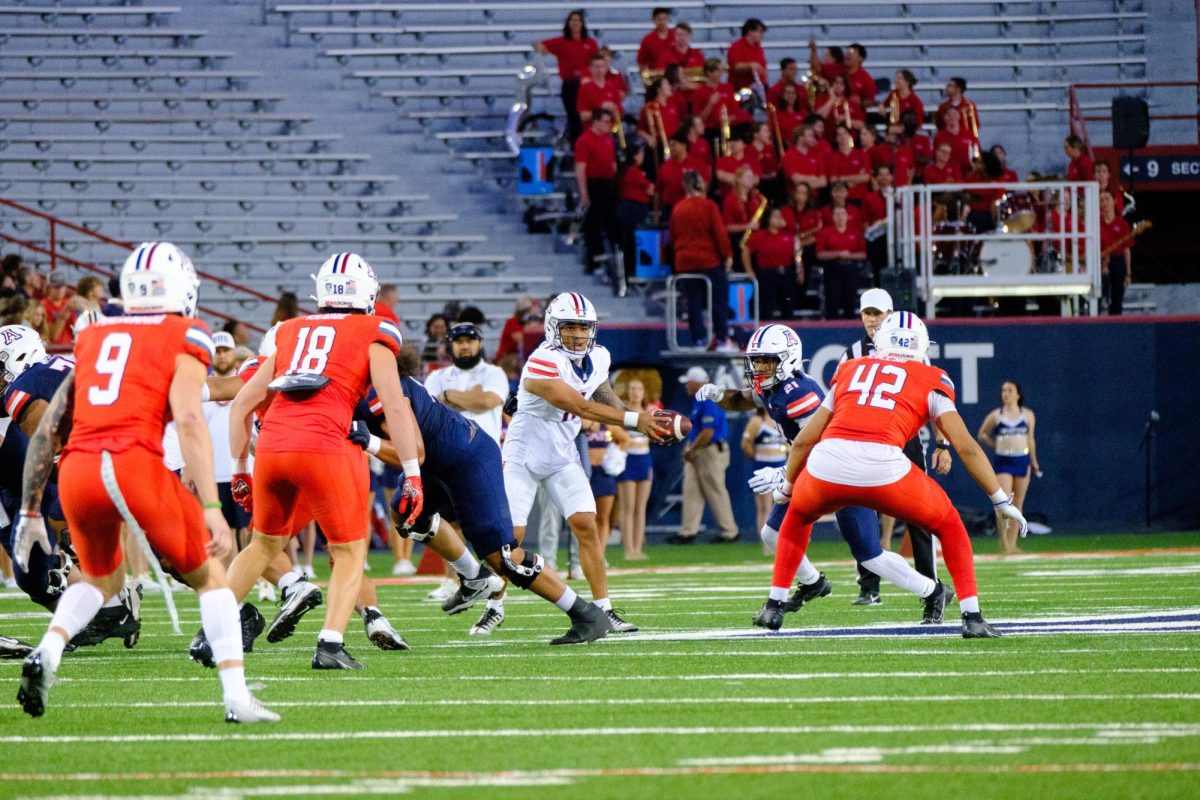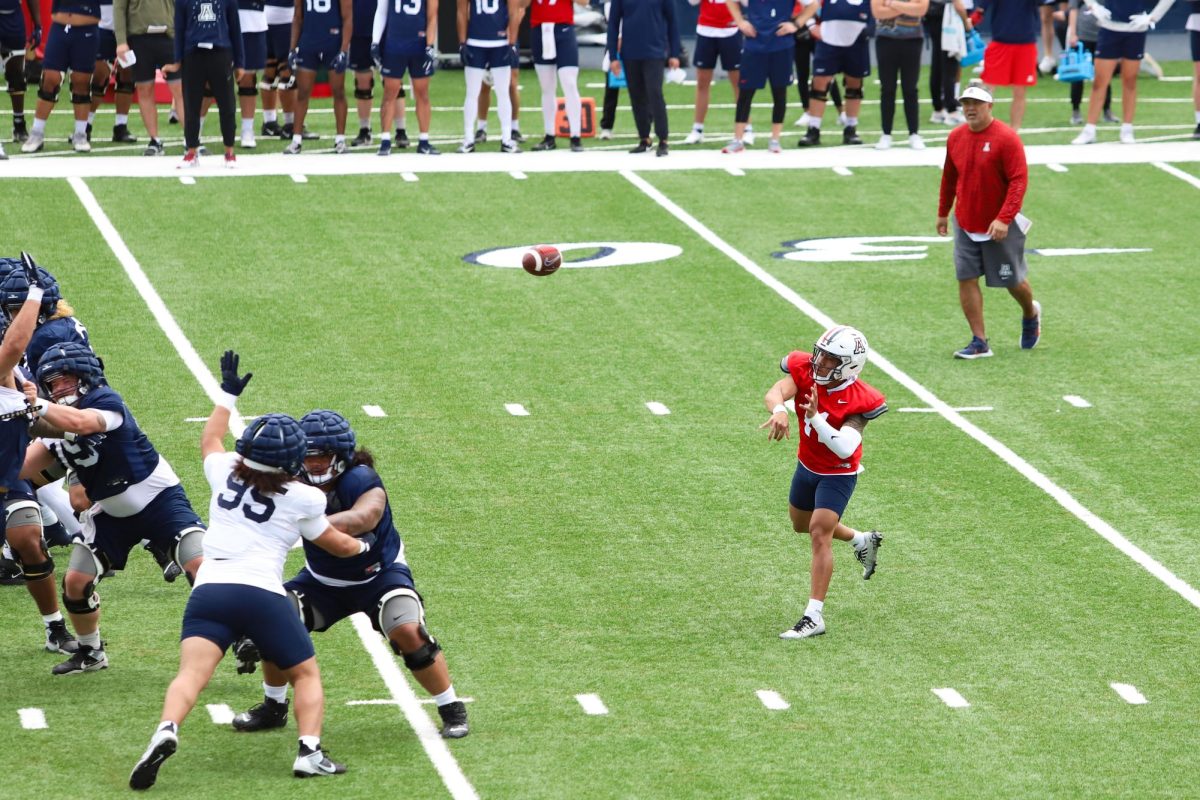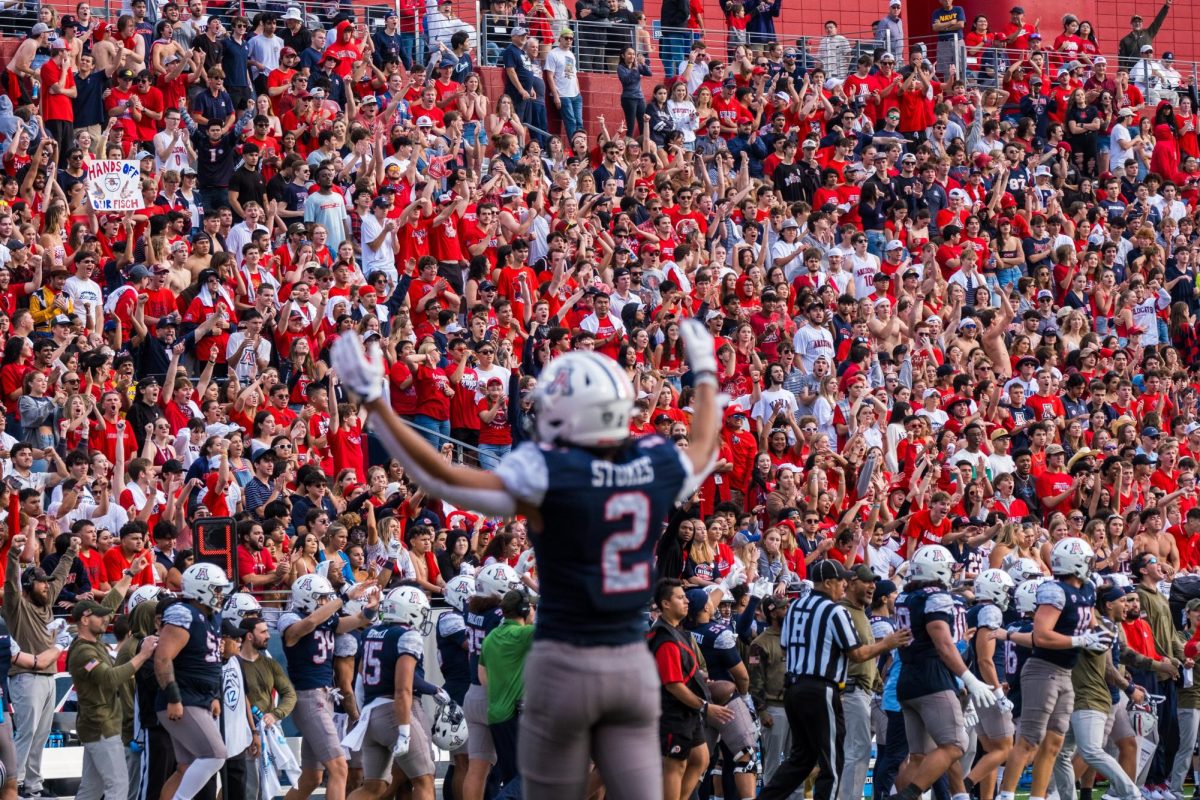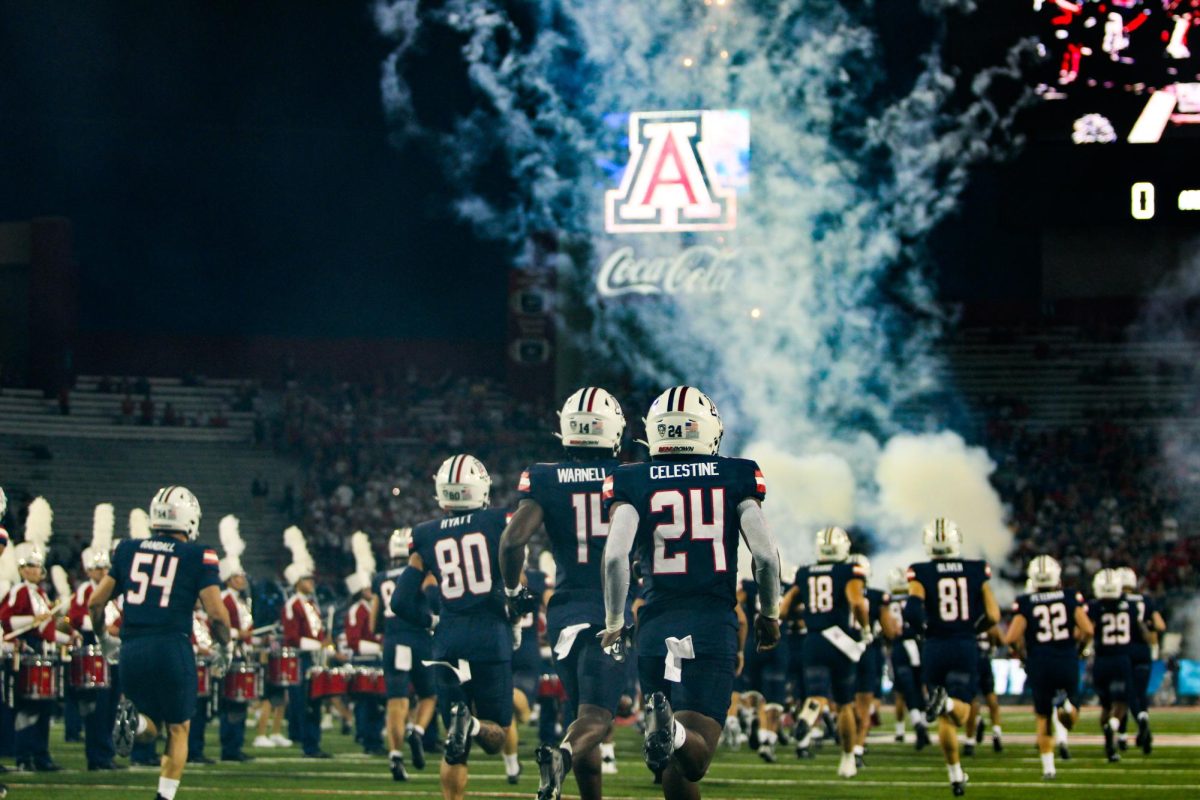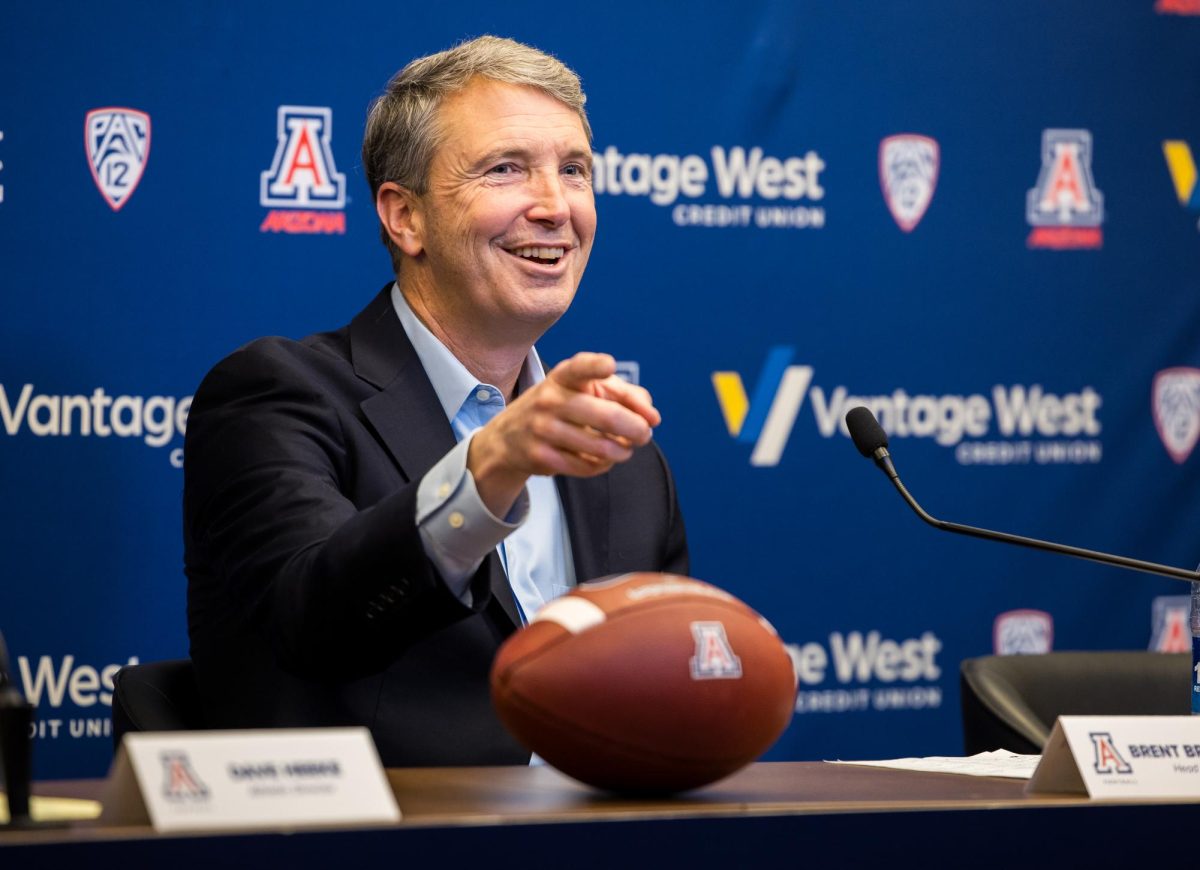It has been a while since the University of Arizona hired an African-American coach in one of the major four revenue sports on campus, men’s basketball, football, baseball and softball. Not since 1972 when the Wildcats brought in Fred Snowden to head their men’s basketball program, has the school ventured down this path. Kevin Sumlin, the new head coach of Arizona football, breaks that trend.
It may not appear too significant, but in a report by Time magazine in 2015, 57 percent of college football teams were black, with only 11 percent of those schools coached by black coaches as of 2017. Though black coaches have roamed the sidelines of Arizona Stadium, none have been in the head coaching spot.
During Sumlin’s introductory news conference, he was asked how significant it was to be the first black head coach in UA history. It’s a common question, especially to Sumlin, who has been asked that question for the third time in a row now after taking over as a head coach of a football team, if you go back to his prior stops at Houston and Texas A&M.
“It is significant and it shouldn’t be overlooked, but you hope in time, you know in the next five to ten years, you hope that is not the first question you get,” Sumlin said.
Sumlin mentioned Snowden in his press conference, which is a stroke of irony and circumstance. Both head coaches are from Broughton, Alabama, which resides in Randolph County, population 22,652. Sumlin said his family left Alabama but followed Snowden during his coaching career as a model of inspiration due to his coming up as a coach in a segregated school system.
In the Pac-12 the past 40 seasons, there have only been eight head coaches selected to lead their respective universities: Tyrone Willingham (Stanford, Washington), Willie Taggart (Oregon), Karl Dorrell (UCLA), Jon Embree (Colorado), Dennis Green (Minnesota) and David Shaw (Stanford), and Cory Hall (Oregon State) served in an interim capacity this season as well. With the hiring of Sumlin and Herm Edwards, the new head coach at ASU, the total rises to 10.
“He is going to be able to tap into that recruiting pool of individuals who can see themselves here,” former Arizona Wildcat wide receiver Syndric Steptoe said. “Moms and dads can see their kids coming here and playing because they see someone that resembles them, and sees someone who can also communicate with them on a level that hasn’t necessarily been missing, but just on a deeper level now. So I think that is going to be a huge impact on the recruiting process.”
In a 2013 report by Joshua Pitts and Daniel Yost of Kennesaw State University, the number of black athletes that changed positions from quarterback to another lesser-profile spot was 62 percent. White athletes changed 16 percent of the time. It is a form of racial stacking, according to SBNation writer Richard Johnson, and a glimpse as to one of the many reasons it has been hard for black coaches to find themselves in positions of power at college campuses.
That issue also aligns with a pipeline issue in that a majority of leadership at universities are held by white men. At universities nationwide, nearly 87 percent of athletic directors are white along with 90 percent of athletic facility representatives, according to the New York Times. That is at the athletic level; at Arizona, the proportions are more severe on a general level.
Currently, on the campus of Arizona according to the 2016-17 fact book on diversity, only 288 of the 15,056 employees are black — that’s not even two percent. Four of the 175 serve in an administrator capacity such as provost, deans, etc. Of the current athletics coaches, three are black: Adia Barnes (women’s basketball), John Court (Gymnastics) and Fred Harvey (cross country and track and field).
“I came here on my recruiting trip back in ’91, and one of the biggest things were that people used against us was the state of Arizona doesn’t care about Martin Luther King, they don’t celebrate it,” former Arizona safety Brandon Sanders said. “When I came out here I saw that our city did. You’re talking about 27 years ago. And now both the schools have African-American coaches… if [Sumlin] continues to work and do everything else there will be more opportunities for more people like myself and everybody else.”
Though just one barrier, he understands and accepts it as a topic of discussion, however it isn’t one that defines him.
“You’re an example for a lot of other coaches, and for guys to say that, ‘Hey, I can do that’ at the highest level of college football, are you proud of that? Yes,” Sumlin said. “At a certain point you hope your success can help others attain this kind of level and it won’t be that big a deal.”
Follow Saul Bookman on Twitter



